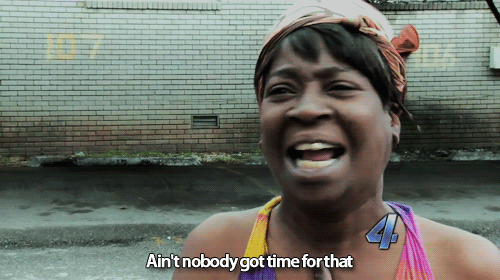My sister posted a link this morning to this well-justified rant by Michael Ruhlman. Go read it, and then come back. I’ll wait.
.
..
…
Okay, so what do you think about all that? Does his advice seem counter-intuitive? Are you fighting a weight problem, and trying to do it by buying low-fat this and reduced-sodium that and zero-calorie the other thing?
Well, stop it. Seriously.
Mr. Ruhlman makes some excellent points regarding the desire for longevity instead of quality, and of the role the media plays in keeping everybody afraid of the bad food of the week. For his part, he says he chooses his food based on how he feels after he eats it, using the feedback his body provides as a guide for what he should eat more or less of.
That can be a very useful concept. The trouble is, do most people even know what their body is saying? The food education of most Americans is that if it tastes good (a nebulous term in the country that invented fast food) and it’s easy, eat it. And if you feel bad after, medicate it. The problem is with you, not the 1200 calories of Hungry Man dinner you just put down (with 2 cans of Diet Coke) while you watched fat celebrities jump into a pool.
No, seriously, that’s a thing now. And people look at me weird when I say I don’t watch TV.
Foods that are high in fats also tend to be highly caloric, and so they can make you fat, but it isn’t because of the fat. It’s because if you have 4 ounces of salad with 2 ounces of cheese on/in it, and 3 tablespoons of dressing, you just ate about 800 calories and thought you were eating light. And if you’re like most Americans and fairly sedentary, your body may only need about 1800 to maintain weight in the first place.
And your entree hasn’t even come yet.
If you’re trying to cut weight (aren’t we all?), the only known way to do that without surgery is to establish a long-term caloric deficit. You have to burn around 3500 more calories than you ate just to burn a pound of fat. To accomplish this, a lot of people go the diet foods route I referenced in my second paragraph. But what you find out when eating them is that they just aren’t satisfying. They lack flavor, substance, and very often nutritional content. So instead of enjoying that one rice cake as a 50-calorie snack, you’ve plowed through the whole package before you’re sated, and used up seven hundred calories of your daily allowable total.
The story remains the same for all manner of “diet” foods, literally from soup to nuts (seriously, those little 100 calorie packets of nuts? They make the airlines look generous). So here’s what I can recommend, from a whole lot of reading and no small amount of personal experience: eat well, just less of it. That’s right, eat whole foods, make them yourself, and don’t skimp on the salts, fats, carbs, or any other media-maligned food category. Just be honest about your caloric needs, and then be honest when accounting for your intake.
The breakfast I posted above consisted of four eggs (the horror!), a quarter cup of salsa and an ounce of Boar’s Head white cheddar (still looking for that local cheese source… anybody?). It was a bit over 400 calories, and had 27 grams of fat and over 500 mg of sodium. Surely I must’ve stroked out after eating it, right? No, dummy, I felt great. I paid some bills, went to the gym, ran some errands, and didn’t need to eat again for something like 6 hours. Because I was sated. Six small meals a day?
And where are you going to come up with six 300 calorie meals, anyway?
So do like the man says. Eat what your body likes. Realize that your body includes more than your mouth. And then use your brain to be honest with yourself about how much you need, and how much you’ve taken in already. If you need help, there are dozens of awesome food tracking apps, like My Fitness Pal or The Daily Plate. And if you have trouble figuring out the output part of the equation, try one of a handful of awesome gadgets like the BodyMedia Fit, FitBit or Jawbone UP.
You can do this, and it probably won’t be as painful as you thought. People lose weight every day, and still eat things they want to eat. Remember that in order to be healthy, you don’t go on a diet. You change your lifestyle. Make that lifestyle enjoyable, and sustainable.


